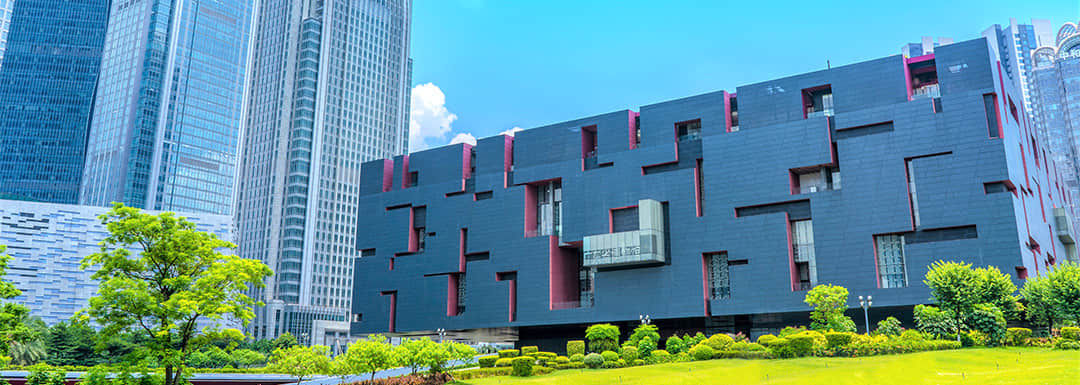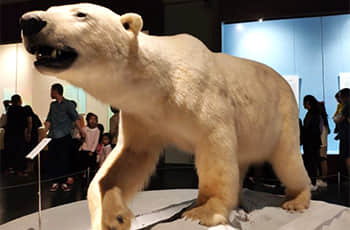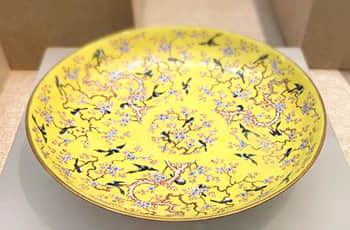Guangdong Museum

Guangdong Museum is located in Pearl River New Town and has the shape of a jewelry box. The museum has three divisions: the historical pavilion, the art gallery, and the natural hall, in which the history, culture and customs of Guangdong Province are displayed. Collections in the Museum cover the various aspects. Among them, the collection of paintings and porcelains of the "Lingnan Painting School" is splendid, and the exquisite craftsmanship of Chaozhou wood carving is also amazing.
- Chinese name: 广东省博物馆 Guǎng Dōng Shěng Bó Wù Guǎn
- Constructed: 1957
- Estimated visit duration: 1-3 hours
- Tickets: free
- Address: No. 2, Zhujiang East Road, Zhujiang New Town, Tianhe District, Guangzhou
- Open hours: Tuesday to Sunday, 9:00-17:00
- Best time to visit: All year round
- How to get there:
1.Take Bus No. 886, 886A or 293 and get off at Xian Village Stop
2.Take Bus No. 40 or 407 and get off at West Stop of Station of Guangzhou Opera House
3.Get out from Exit B1 of Zhujiang New Town Station of Metro Line 3 and proceed to Guangzhou Opera House. It is 100 m east of the House along Linjiang Avenue
4.Get out from Exit D of Liede Station of Metro Line 5, proceed to Xian Village Road. Then turn left and walk about 200 meters along the Xian Village Road.
Highlights of the Museum
Guangdong Museum is the only provincial-level comprehensive museum in Guangdong Province and a national first-class museum. The collections mainly fall into three categories: history and culture, art, and nature. According to the statistics made in December 2009, there are four pavilions, that is the Historical Pavilion, the Art Gallery, the Natural Hall and the Temporary Hall, which between them are home to 166 thousand pieces (sets) of collections. In addition, over 100,000 books and materials are kept here.
 the specimen of Polar bear
the specimen of Polar bear Guangdong natural resources exhibition
The “Guangdong Natural Resources Exhibition” covers nearly 4,000 m2 and has 7 themes, including geological geomorphology, minerals, gemstones, Chinese herbal medicines, terrestrial wildlife, marine life, and paleontology. The titles are as follows: “Our Homeland – Geological Geomorphology”, “Our Treasures – Mineral Resources”, “Spirits of Stones – Gems”, “Lingnan Materia Medica – Chinese Herbal Medicine”, “Residents on Land – Terrestrial Wild Life”, “The World of Marine Animals – The Aquarium” and “Exploring the Long Lost Life – Paleontology”.
Guangdong historical and cultural exhibition
The exhibition hall of “Guangdong History and Culture Exhibition” covers an area of 4,000 m2, in which there are more than 1,500 pieces of cultural relics and over 300 photos. As one of the three basic pavilions, a rich and varied means of cultural relics, pictures, oil paintings, sculptures, models, multimedia, and restoration scenes are employed to help visitors learn the historical and cultural changes from the Mapa men of Neolithic Era until the foundation of the People’s Republic of China in 1949. Four chapters therein are Source of Canton, Uncharted Sea, Heritage and Warfare in the South China Sea.
 The exhibition of ceramic
The exhibition of ceramic Ceramic Exhibition from all dynasties
The collection of ceramics is displayed chronologically based on the involvement of Chinese ceramics. The origins, growth and prosperity are shown from the Neolithic Age to the Qing Dynasty. 300 selected pieces of cultural relics inform the about the ancient Chinese ceramic culture in terms of technological progress, the evolution of artifacts, and foreign trade. The exhibition has four sections: “The first kiln fire – the origin of pottery and porcelain”, “The rise of porcelain country – evolution of ceramics”, “The leading schools – the heyday of ceramics”, “The Pearl of the South – the development history of Cantonese ceramics”.
Drop us a line and we'll connect you with the top China expert in no time!